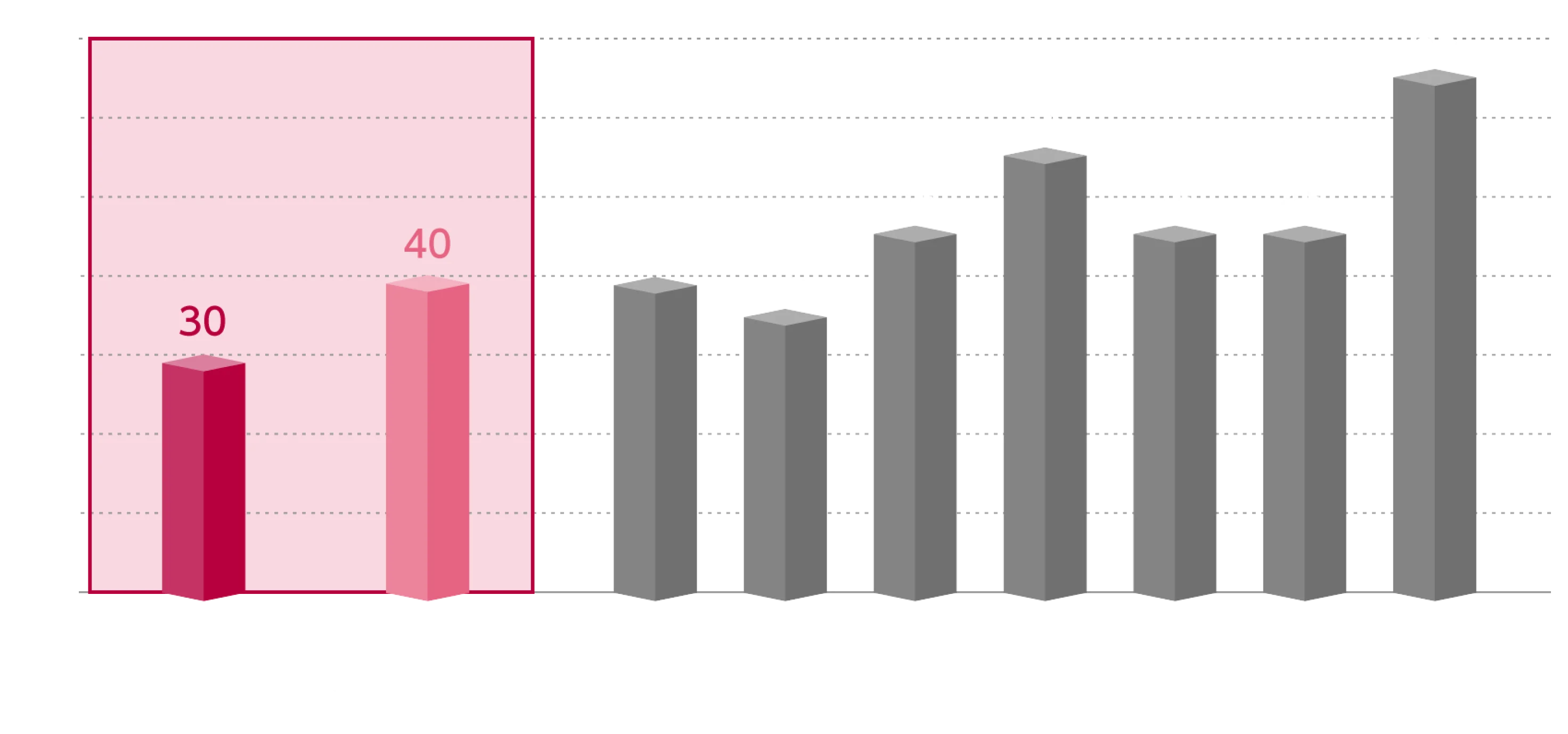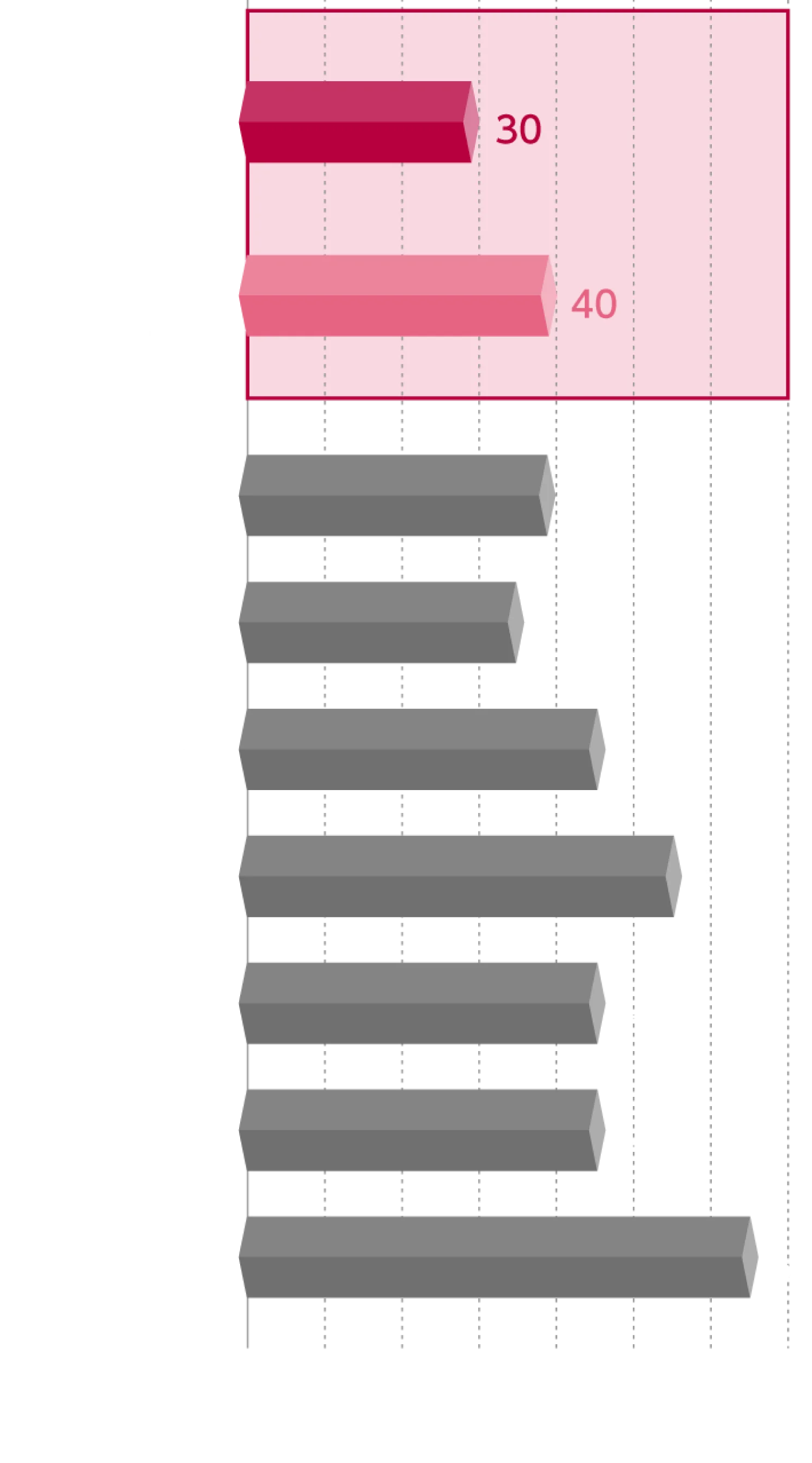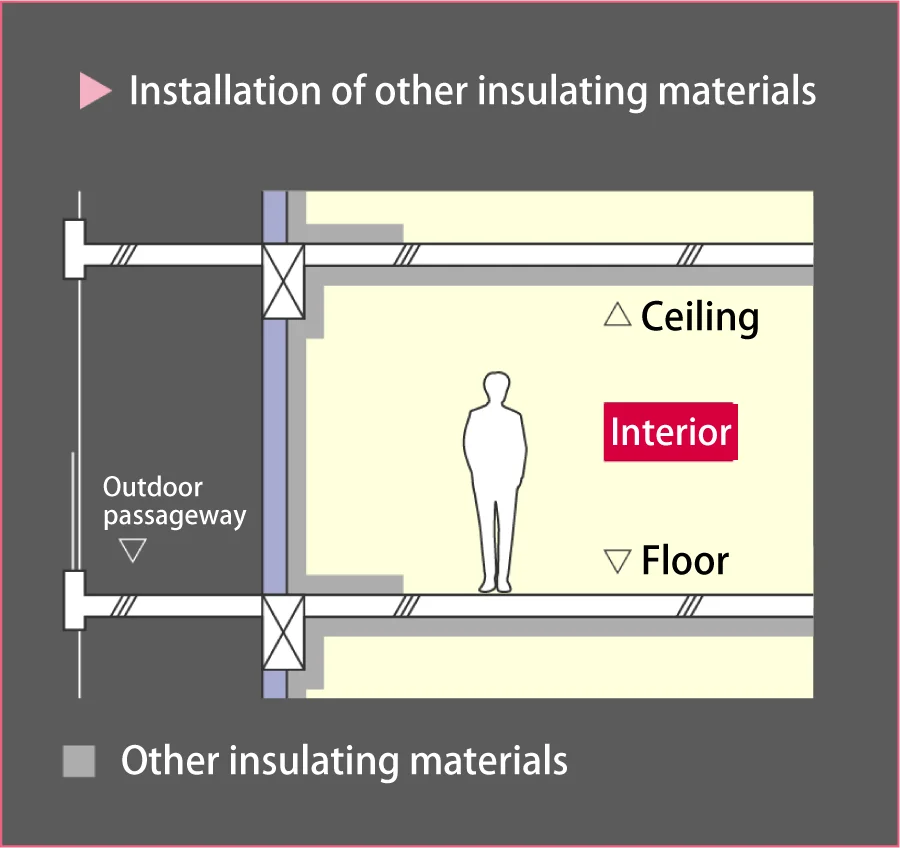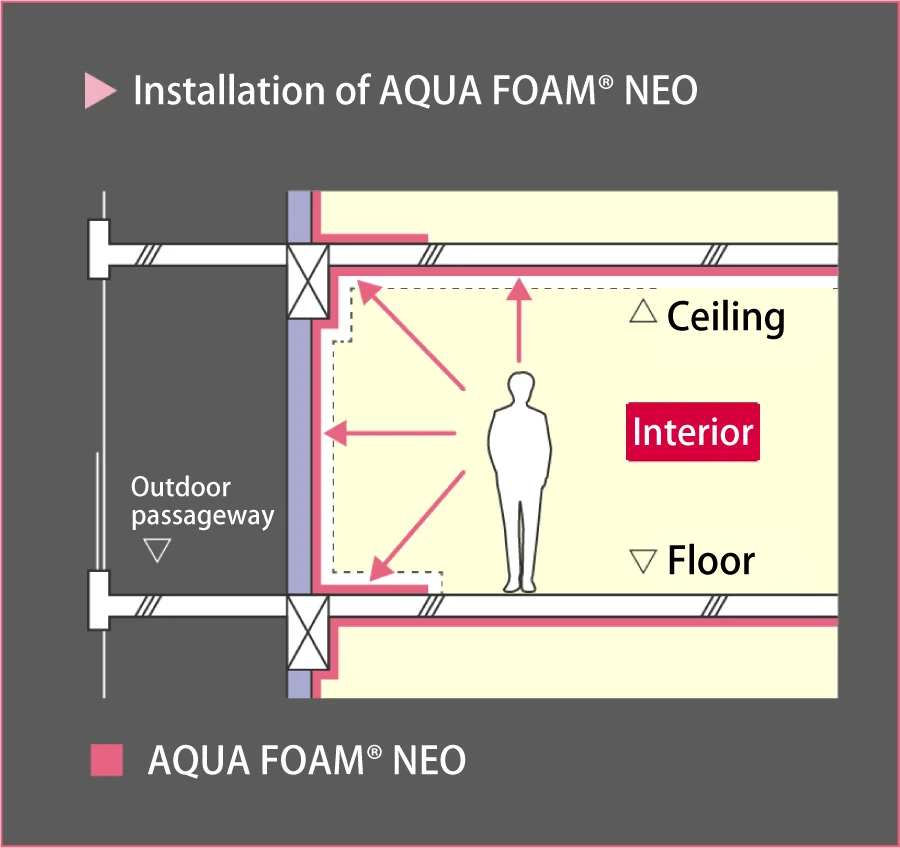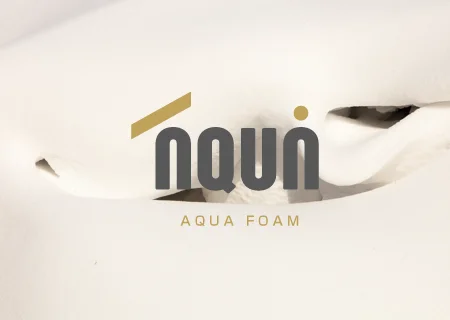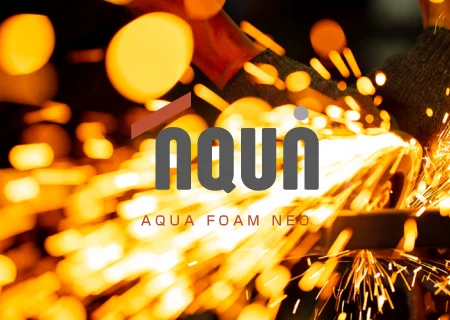ABOUT
What is AQUA FOAM NEO?
AQUA FOAM NEO is
an insulating material that aids in measures to prevent global warming!
AQUA FOAM NEO demonstrates outstanding insulating performance in cold regions and has obtained ministerial certification for its fire resistant structure. Its high airtightness suppresses energy consumption and reduces the risks of mold and corrosion. It further excels in flexibility of installation and uses an environmentally friendly foaming agent.

-
FEATURE 01
Highest-class insulation performance
AQUA FOAM NEO demonstrates outstanding insulation performance, particularly in cold regions or other locations that demand high insulation.
-
FEATURE 02
Ministerial certification for fire resistant structure
AQUA FOAM NEO is designed to suppress combustion in the event of a fire and has received Ministerial certification for its fire resistant structure.
-
FEATURE 03
Outstanding airtightness
AQUA FOAM NEO adheres tightly without gaps through sprayed installation. This achieves excellent airtightness that raises heating and cooling efficiency and reduces the energy consumption of the structure as a whole.
-
FEATURE 04
Moisture resistance
AQUA FOAM NEO's moisture resistance prevents condensation, reducing the risks of mold and corrosion and improving the durability of homes.
-
FEATURE 05
Self-adhesive force
Through its self-adhesive force, AQUA FOAM NEO stably maintains its performance over a long period.
-
FEATURE 06
Flexibility of installation
AQUA FOAM NEO can be installed in areas that present complex shapes or constrained space. It exhibits little shrinkage and cracking after installation, offering long-lasting, stable performance.
-
FEATURE 07
Consideration for the environment
As its foaming agent, AQUA FOAM NEO uses hydrofluoroolefin (HFO), which has a global warming potential (GWP) value of approximately 1 and an ozone depletion potential (ODP) value of 0. This makes AQUA FOAM NEO an effective insulating material in combating global warming.
Basic physical properties
| Test items |
Physical property
measured value |
Testing method |
Standard value
JIS A 9526:2022 (Type A 1H) |
| Base solution viscosity |
Polyisocyanate components
(mPa・s)/20℃ |
313 |
JIS A 9526 |
80〜1500 |
Polyol components
(mPa・s)/20℃ |
259 |
JIS A 9526 |
80〜1500 |
| Density |
(kg/m3) |
35 |
|
|
| Compressive strength |
(kPa) |
217 |
JIS A 9526 |
80 or higher |
| Adhesive strength |
(kPa) |
349 |
JIS A 9526 |
80 or higher |
| Thermal conductivity |
[W/(m・K)] |
0.021 |
JIS A 9526 |
0.026 or lower |
| Moisture permeability |
[ng/(m・s・Pa)] |
2.1 |
JIS A 9526 |
9.0 or lower |
| Combustibility |
(seconds)
(mm) |
60
31 |
JIS A 9526 |
Combustion time is within 120 seconds and combustion length is within 60mm |
AQUA FOAM NEO
achieves high insulating performance even in thin configurations
Thickness of materials demonstrating performance equivalent to AQUA FOAM NEO with installed thickness of 30mm
A: Extruded polystyrene foam insulating material
(JIS A 9521 Type 2 bA)
B: Extruded polystyrene foam insulating material
(JIS A 9521 Type 3 bA)
C: Polystyrene foam bead insulating material
(JIS A 9521 No. 3)
D: Glass wool insulating material
(JIS A 9521 ordinary product 16-45)
E: Glass wool insulating material
(JIS A 9521 high-performance product HG16-38)
F: Rock wool insulating material
(JIS A 9521 MB)
G: Sprayed rock wool
(JIS A 9504, JIS R 5210 or JIS R 5211)
Example of design specifications
Simple, smart installation
-
Numerous certifications for fire resistant structure
AQUA FOAM NEO has received fire-resistant structure certification (30-minute and 45-minute) in wood-frame construction and 2x4 construction.
It has also acquired additional insulation specifications for enhanced outer surface performance.
-
Not restricted by conditions such as narrow lots
On-site spraying of AQUA FOAM NEO requires only a compact vehicle, meaning that installation is not restricted by narrow lots, dense areas, or other locations presenting difficulties in access. Consistent airtightness and insulation properties can be obtained with little differences in performance due to regional characteristics or construction conditions.
Precautions in installation
As AQUA FOAM NEO improves on the insulation properties of conventional urethane foam, the installation of combined ducts on pillars to prevent overheating of electrical wiring, or design that avoids the burying of wiring in insulation, is recommended. Also note that the product cannot be sprayed directly onto flexible surfaces such as moisture barrier sheets or materials that are not firmly fixed.

-
How does AQUA FOAM NEO differ
from AQUA FOAM?
-
AQUA FOAM is an open-cell foam and AQUA FOAM NEO is a closed-cell foam. AQUA FOAM does not contain gases, while AQUA FOAM NEO uses the high-performance, environmentally friendly foaming agent HFO. Its density is about three times that of AQUA FOAM.
-
Why is AQUA FOAM NEO pink?
-
Following guidelines by the Japan Urethane Foam Association, AQUA FOAM NEO is formulated with pink coloring to allow distinguishing among different types of sprayed urethane.
-
Aren't resin products prone to burning in the event of a fire?
-
AQUA FOAM NEO is formulated to demonstrate fire-retardant performance, and thus does not readily burn. For wood-frame construction and 2x4 construction, the product has obtained fire-resistant structure certification from the Ministry of Land, Infrastructure, Transport and Tourism in combination with exterior wall materials and interior materials.
-
Are anti-condensation
moisture barriers necessary?
-
AQUA FOAM NEO features outstanding moisture resistance performance. As a type of insulating material, AQUA FOAM NEO comes under the classification of "rigid urethane foam for building insulation, Type A 1H" with high resistance to moisture permeation. Installation of a moisture barrier is not required under energy-saving standards.
-
Is loss of gas from the foaming
agent a concern?
-
As its foaming agent, AQUA FOAM NEO uses HFO, which has a high molecular weight. The permeability of the gas from the closed-cell membrane of independent bubbles is extremely low, with little change in thermal conductivity over time.
 」
」


